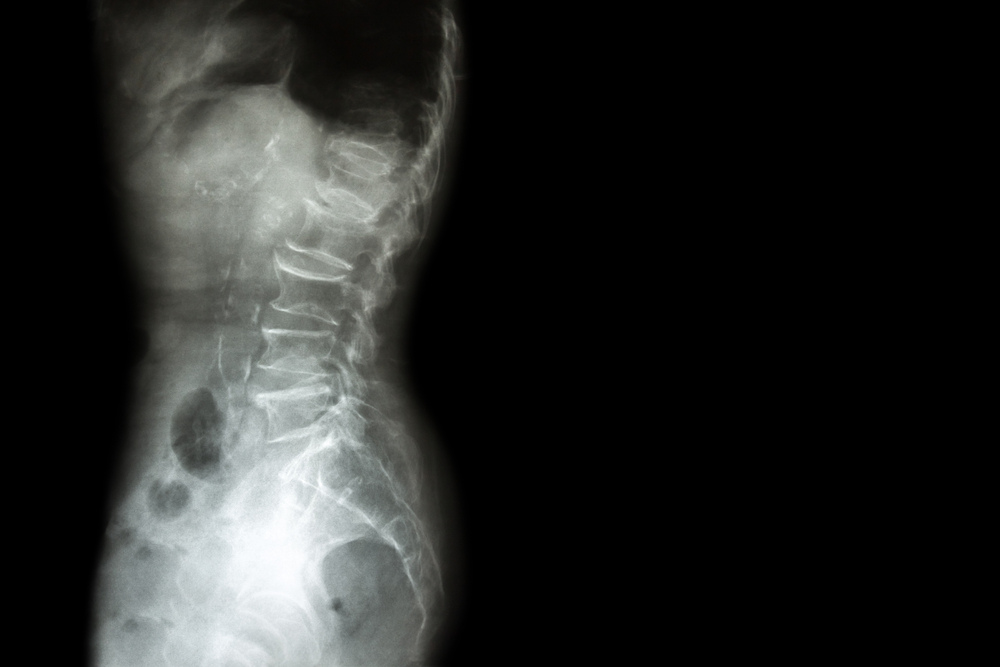Spondylolisthesis vs. spondylosis vs. spondylolysis…what a mouthful!
We’d understand if you were to confuse any of these three — very different — issues of the spine. After all, they sound so similar. Two are conditions, one is a type of spinal fracture that may lead to additional spinal conditions.
Spondy-losis, Spondy-lo-lysis, and Spondy-lo-lis-thesis involve very different symptoms, causes, and risk factors.
Let’s compare spondylosis vs. spondylolisthesis vs. spondylolysis now so you can ensure you understand you or your loved one’s diagnosis clearly.
What is Spondylosis?
Spondylosis is a fancy word for osteoarthritis of the spine:
- Spondylosis is a normal, often age-related condition, that is the “result of normal ‘wear and tear’ on both the soft structures and bones that make up the spine”.
- It is commonly symptomatic in the the cervical (neck) and lumbar (low back) areas of the spine but also affects the thoracic spine.
- Spondylosis may be asymptomatic, but when symptoms are present, they can range from pain to a limited range of motion.
- Spondylosis can range in severity. It can be serious, but often, it isn’t.
- Treatment for spondylosis largely “depends on the specific set of symptoms and findings that a patient is found to have and the area of the spine that is affected”.
What is Spondylolysis?
Spondylolysis is a type of spinal stress fracture, rather than a spine condition:
- Also known as a Pars fracture/defect, Spondylolysis is not an acute (sudden) fracture, but rather, a result of repeated stress (such as that experienced from repetitive activities like gymnastics or football). For this reason, it is commonly observed in adolescents involved in athletic activities.
- Rings of bone that make up the middle and posterior (rear) portion of the spinal column protect the spinal cord. Each of these rings contains two pars interarticularis, one on each side of the vertebra. When these rings become fractured, Spondylolysis is the result.
- Many people with spondylolysis experience no symptoms until later on in life.
- If present, symptoms often include pain and stiffness in the lower back that becomes worse with activity. Nerve symptoms may occasionally also be present.
- Spondylolysis can lead to a type of spondylolisthesis called isthmic spondylolisthesis. But spondylolysis and spondylolisthesis are not the same thing.
What is Spondylolisthesis?
Spondylolisthesis refers to a condition that occurs when one spinal vertebra slips over another vertebra:
- Discs can slip in two ways – forwards or backwards. Forward slippage, which is called anterolisthesis, is much more common than backward slippage, which is called retrolisthesis.
- Spondylolisthesis has many different causes. Usually, it presents due to age-related spinal osteoarthritis. This is called “degenerative spondylolisthesis”.
- Isthmic spondylolisthesis is “caused by a pars interarticularis defect, also known as a pars fracture or spondylolysis. Pars fracture affecting both sides of the connection between the lamina and pedicles leads to slippage of the vertebrae”.
- Congenital or dysplastic spondylolisthesis is caused by spinal birth defects.
- Traumatic spondylolisthesis occurs when trauma forces vertebrae to become out of alignment.
- Iatrogenic (postsurgical) spondylolisthesis is “caused by spinal destabilization resulting from a prior spinal decompression surgery without instrumentation”Generally a result of bone removal and tissue disruption from traditional open spine surgery, and tubular MIS techniques.
- If you have spondylolisthesis, you may experience “localized lower back pain and/or – if there is associated nerve compression – pain and/or numbness (neuropathy) that radiates down to the legs”.
- Usually (but not always), spondylolisthesis isn’t all that serious (but it can be painful!).
How Do I Treat Spondylolisthesis vs. Spondylolysis vs. Spondylosis?
Each of these spine related issues has different causes and means different things to the associated patient, as you are likely now aware. But when it comes to treating spondylolysis vs spondylosis vs spondylolisthesis, what are your options?
The orthopedic spine specialists here at Desert Spine and Scoliosis know how to treat your spondylolisthesis, spondylosis, or spondylolysis and would be happy to provide you with additional guidance or treatment plans.



Recent Comments